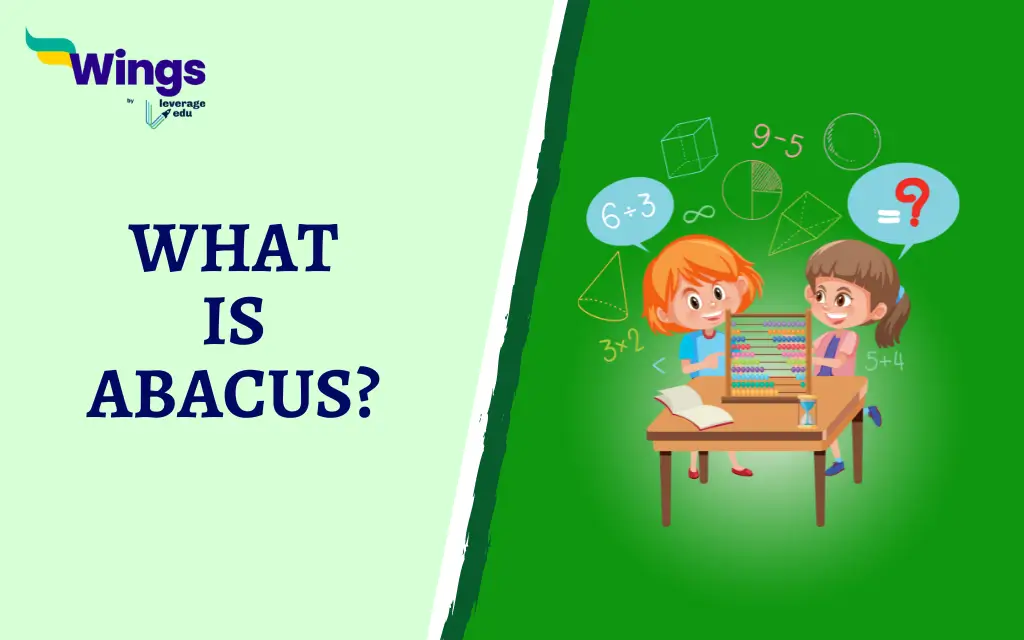The Abacus is also known as a counting frame. An Abacus is an ancient manual tool used for calculations. Did you know that an Abacus has been around for over 4,000 years and is the forerunner to our modern calculators? Furthermore, it uses a system of beads that slide on rods within a frame which represent numbers and solve mathematical problems. Moreover, this was once used across the globe, however, the importance of the Abacus decreased with the use of the Hindu-Arabic numeral system. Nonetheless, it is still used in some parts of the world for accounting purposes, educational applications, and even in situations where electronic devices are unavailable. Read on to learn more in detail about the Abacus, how does an Abacus work and the Use of an Abacus.
Also Read: Top Free & Paid Abacus Teacher Training Course Online
How Does an Abacus Work?
The design of an Abacus can vary depending on the region, but the core functionality remains the same.
- An Abacus has a rectangular frame with a horizontal bar dividing it into upper and lower sections.
- Each vertical rod within the frame represents a digit position in a number system, usually base-ten (decimal).
- Moreover, the beads strung on these rods signify the numerical values.
- The upper deck usually holds one or two beads, hence representing the higher values (5 or 1 in a base-ten system).
- While the lower deck has a larger number of beads (usually four or five) for the unit values.
Therefore, Calculations are done by using the beads.
- Moving a bead on the lower deck one position up represents adding 1.
- Similarly, pushing a bead on the upper deck down signifies adding 5 (or the higher value depending on the system).
- Likewise, subtracting involves moving beads down on the lower deck or pulling beads on the upper deck up.
- More complex calculations like multiplication and division involve carrying over values between different rod positions, thus needing a deeper understanding of the Abacus system.
Also Read: Multiplication and Division Word Problems
What are the Types of Abacus?
There are various types of Abacus around the world, here are 4 of them:
- Soroban (Japanese Abacus): The soroban is perhaps the most well-known type of Abacus.
- It has an odd number of rods, with each rod representing a place value (such as units, tens, hundreds, etc.).
- Beads on the rods are used to perform arithmetic calculations.
- Suanpan (Chinese Abacus): Similar to the soroban, the suanpan is used in China and other East Asian countries.
- It has two beads on the top section of each rod and five beads on the bottom section, hence allowing for calculations involving decimal numbers.
- Schoty (Russian Abacus): The schoty is a type of abacus used in Russia and other Slavic countries.
- It usually has ten rods, each representing a decimal place value, with one bead above the bar and four below.
- Napier’s Bones: Invented by John Napier in the 17th century, Napier’s Bones are a type of calculating device with rods with numbers inscribed on them.
- Multiplication and division can be done by aligning the appropriate rods and reading the results from their intersections.
Also Read: Order of Operations and PEMDAS Rule
What is the Use of Abacus in Maths?
In today’s day, we have electronic calculators that have replaced the abacus for everyday computations. However, it still holds value in our world of mathematics education, particularly for young children. Here is how:
- Abacus training uses calculation through the mental visualisation of bead movements.
- Additionally, this boosts memory and the ability to perform calculations without depending only on written numbers.
- Additionally, this boosts memory and the ability to perform calculations without depending only on written numbers.
- Furthermore, by physically manipulating the beads, children get an understanding of place value and how numbers are composed of units, tens, hundreds, and so on.
- Abacus training needs focus and coordination to perform calculations accurately. Thus, this regular practice can improve overall concentration and problem-solving skills.
Related Blogs
I hope this helps! Did you like learning about What is Abacus? Keep reading our blogs to learn more about the basic concepts of Maths!
 One app for all your study abroad needs
One app for all your study abroad needs














